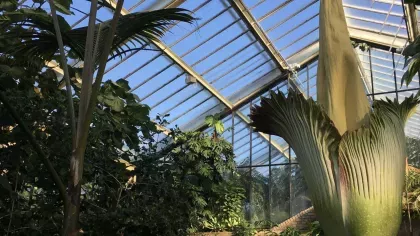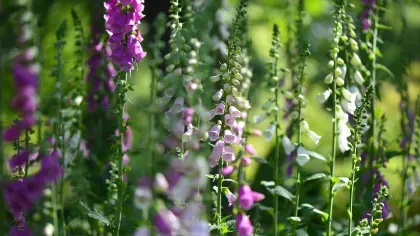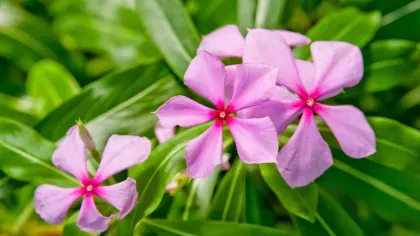5 May 2017
Bluebells on ice
Bluebells are just one of the many jewels in Wakehurst’s glittering crown, transforming our woodland floors April to May.

The carpet of deep blue is one of nature’s definitive markers that summer is just around the corner, so it is not surprising that the bluebell is one of the nation's best-loved wild flowers. The delicate blue flowers are actually bulbous herbs with flowering stems growing about 50cm tall. They spend most of the year as bulbs underground and emerge to flower from April onwards—at Wakehurst there are literally millions of bulbs scattered throughout our woodlands.
Bluebells belong to the genus Hyacinthoides, which is in the Asparagacae plant family. As many as 20 sweetly-scented flowers can appear on a single flower stalk, which droops or nods to one side. The flowers are bell-shaped and can be blue, white or rarely even pink. Each flower has six petals with upturned tips.
At Wakehurst we try our best to keep our bluebells native. Patches of Spanish bluebells (Hyacinthoides hispanica) occasionally appear, but are quickly weeded out by horticulturists who don’t want them to interbreed with our traditional blooms. This non-native breed is threatening our own species. When garden waste is fly-tipped in the countryside Spanish bluebells become established, interbreeding with native blooms and changing future populations forever.
Almost half the world's population of bluebells grow here in the UK. You'll find them in broadleaved woodland, along hedgerows and in fields. Bees, hoverflies, butterflies and other insects love bluebells and feed on their nectar—their flowers providing an important early source of nectar. In fact bees can actually 'steal' the nectar from the bluebell flowers by biting a hole in the bottom of the bell, reaching the nectar without pollinating the flower.
Bluebells have had several major uses throughout our history. Their sticky sap was used to bind pages into the spines of books and during the Bronze Age it stuck the feathers onto arrows, known as fletching. Also, bluebell bulbs were crushed to provide starch for the ruffs of Elizabethan collars and sleeves.
A final interesting fact about the bluebell is that in 1998 it was made illegal for anyone to sell native bluebells collected from the wild. This legislation was designed specifically to protect them from unscrupulous bulb collectors who might supply garden centres.


